A Conversation with Sally Kauffman
Chill Out: Paintings by Sally Kauffman
Artist Talks: November 20, 2019, 5-7PM
Forum Gallery: Schlesinger Arts Center
Northern Virginia Community College – Alexandria Campus
When did you know that you were an artist?
As a child I would sequester myself in a secret spot and draw for hours.
Was there a particular experience that inspired your decision to pursue art?
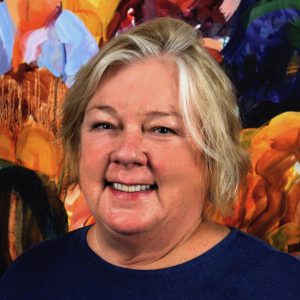 My grandmother taught me to draw and paint as a young girl. One of my favorite memories is sitting by her side watching her paint with watercolors. Her life inspired my own. She was a magical, mystical woman who entertained her family with lavish meals during holidays, especially at Christmas when she dressed as Mrs. Klaus.
My grandmother taught me to draw and paint as a young girl. One of my favorite memories is sitting by her side watching her paint with watercolors. Her life inspired my own. She was a magical, mystical woman who entertained her family with lavish meals during holidays, especially at Christmas when she dressed as Mrs. Klaus.
She owned and operated a therapeutic spa for women as well as an art practice. She painted wonderful images of nature and people. She taught me that I could be whatever I wanted to be.
Are there particular artists or art movements that are an inspiration to you?
Movements and painters amongst the many that influenced my practice from early on include Ukiyo-e artist Hokusai, Venetian School painters Titian, Tintoretto and Veronese, Les Nabis artists Bonnard and Vuillard and Fauvist Matisse. Abstract Expressionism was and remains a major influence. De Kooning, Frankenthaler, Rothko, Pollock, Raushenberg, Johns, Twombly, Mitchell, Krasner, I can’t think of any who did not influence my work. Bay Area Figurative painter Diebenkorn was a revelation to me. Contemporary movements and artists that I currently look at are the YBA (Young British Artists) Cecily Brown, Jenny Saville, Rachel Whiteread and Tracey Emin among many others as well as South African artist Marlene Dumas.
Can you describe your artistic process?
To create the series “Relaxed States” which includes the exhibition “Chill Out”, I discreetly captured images of groups of people lounging and relaxing together using my phone camera. I create digital sketches from the photos by collaging elements and enhancing the color to create a visually dense image. The saturated digital color informs my palette. I mix oil paint and oil painting mediums into a fluid, smooth consistency in small jars, then brush blocks of transparent color directly on the canvas building up multiple layers that afford me flexibility in defining the position and form of the elements. As the forms evolve I respond to the images on the canvas and only reference the digital sketch if I find the need for the original images to inform my own.
Can you talk about how you use visual technologies (computers and software) with your artistic process?
I limit the use of software tools in my creative process to my iPhone and image processing software including Preview, iPhoto and Gimp, all free or shipped with my Mac even though I used many sophisticated tools for 25 years in the tech industry as a user experience designer, graphic designer and art & design director. I’ve resisted integrating digital technology into my art even though I am still fascinated by it, I’m seeking an escape from designing simulated environments and want to live again in the physical world using tangible tools. A good day is when I come home from the studio with paint in my hair and on my face and hands. I use digital tools to create digital sketches in the conceptual phase using snapshots with my iPhone and manipulating the images on the computer. I print the sketches and use them as a reference. The final artwork is produced by hand with paint and canvas.
You have four paintings in the exhibition that were inspired by the summer jazz concerts at the National Gallery in Washington DC. Can you tell us about that experience and what made you want to explore the experience in paint?
 The long answer: after a 20 year hiatus from painting while I worked in the tech industry, I needed inspiration as I resumed my painting practice so I enrolled in a class called “Painting in a Series” at the Corcoran taught by Judy Southerland. Judy reviewed my work and asked me what I was going to paint. I did not know so she gave me a written exercise titled “What Matters” in which you described an activity you care about and how it affects you and others, a social system that interests you and your stance in relation to this system and a condition or question that interests you. I filled it out but still it was unclear to me. So I turned to my private life. My husband and I love to cook and entertain our friends so I started photographing and painting my dinner parties. Out of this grew a series of work centered on groups of people sharing food, swimming and listening to music.
The long answer: after a 20 year hiatus from painting while I worked in the tech industry, I needed inspiration as I resumed my painting practice so I enrolled in a class called “Painting in a Series” at the Corcoran taught by Judy Southerland. Judy reviewed my work and asked me what I was going to paint. I did not know so she gave me a written exercise titled “What Matters” in which you described an activity you care about and how it affects you and others, a social system that interests you and your stance in relation to this system and a condition or question that interests you. I filled it out but still it was unclear to me. So I turned to my private life. My husband and I love to cook and entertain our friends so I started photographing and painting my dinner parties. Out of this grew a series of work centered on groups of people sharing food, swimming and listening to music.
The paintings in the exhibition were inspired by evenings spent sitting in the National Sculpture garden listening to jazz surrounded by the fascinating people who live in DC. I wanted the paintings to celebrate and exude the kind of energy and pleasure that you would find in Manet’s “Le Dejeuner sur l’herbe” and Titian’s painting “The Bacchanal of the Andrians”.
What about your strolls through Porto inspired you? The color and light in the two series of works is very different. How do you use color and light to create the atmosphere in your paintings?
 I visited the Passeio Das Virtudes during the “golden hour” which is the first or last hour of sunlight in a day when the light is soft and warm and the shadows long. This combination of warm colors contrasted with darker cool color defines my typical palette and explains my attraction to the scene.
I visited the Passeio Das Virtudes during the “golden hour” which is the first or last hour of sunlight in a day when the light is soft and warm and the shadows long. This combination of warm colors contrasted with darker cool color defines my typical palette and explains my attraction to the scene.
The paintings inspired from the “Jazz in the Garden” depict the warmer light just before the golden hour. I’m fascinated by paintings that create drama using chiaroscuro, the strong contrast of light or lack of it to define volume in form. Diebenkorn and Hopper’s use of chiaroscuro in their paintings is a good example of this and of course, Caravaggio was the master.
What is that you would like the viewer to take away from their experience of seeing this exhibition?
A collector of a painting in this series recently wrote to me “every time we look at your piece of art we are more delighted.” That is one of the most satisfying aspects of my art practice.
Is there any advice that you would give students as they have made the decision to pursue art?
Define what you want your art practice to be and treat your practice as a profession. This can and will change over time as you mature as an artist and a person. Schedule time for your practice and stick to it even if it involves sitting in your studio and staring at the walls, this is critical to your development. Build a network of your peers by attending local exhibitions and introducing yourself to the artists and gallery owners. Once you have built up that network support your artist friends by attending their art events. Define a social media strategy for yourself. Attend the free lectures at the Smithsonian. Read Art/Work = Everything You Need to Know (and Do) As You Pursue Your Art Career. Rent a studio that hosts open studios and will expose you to other artists and collectors.
To kickstart my art practice after a long hiatus, I studied at the Corcoran in the evenings for 3 years with Judy Southerland who become a mentor for me. (find a mentor) The artists I met in her class are now my peers. I rented studios through which I met different groups of artist friends. I also joined the Studio Gallery, the longest running artist coops in DC, while I had another full-time job. Scheduled annual shows taught me how to prepare and install an exhibit. I learned that I needed to paint when I really didn’t have time or feel like it and how to market my work. I served on the board and learned how to run a gallery. And made more artist friends. I applied for and attended an artist residency at Vermont Studio Center and met an international group of artists. Your network is going to be very important to you. They will expose you to new opportunities and will enrich your practice and life.
What can we expect from your work in the future?
I’m embarking on a big adventure in January. I’m moving to Rome for a year. There are so many things I want to do while I’m there, I’ll be taking workshops, spending lots of time in the museums and galleries and soaking it all in. I’m hoping it will take my work in new directions.
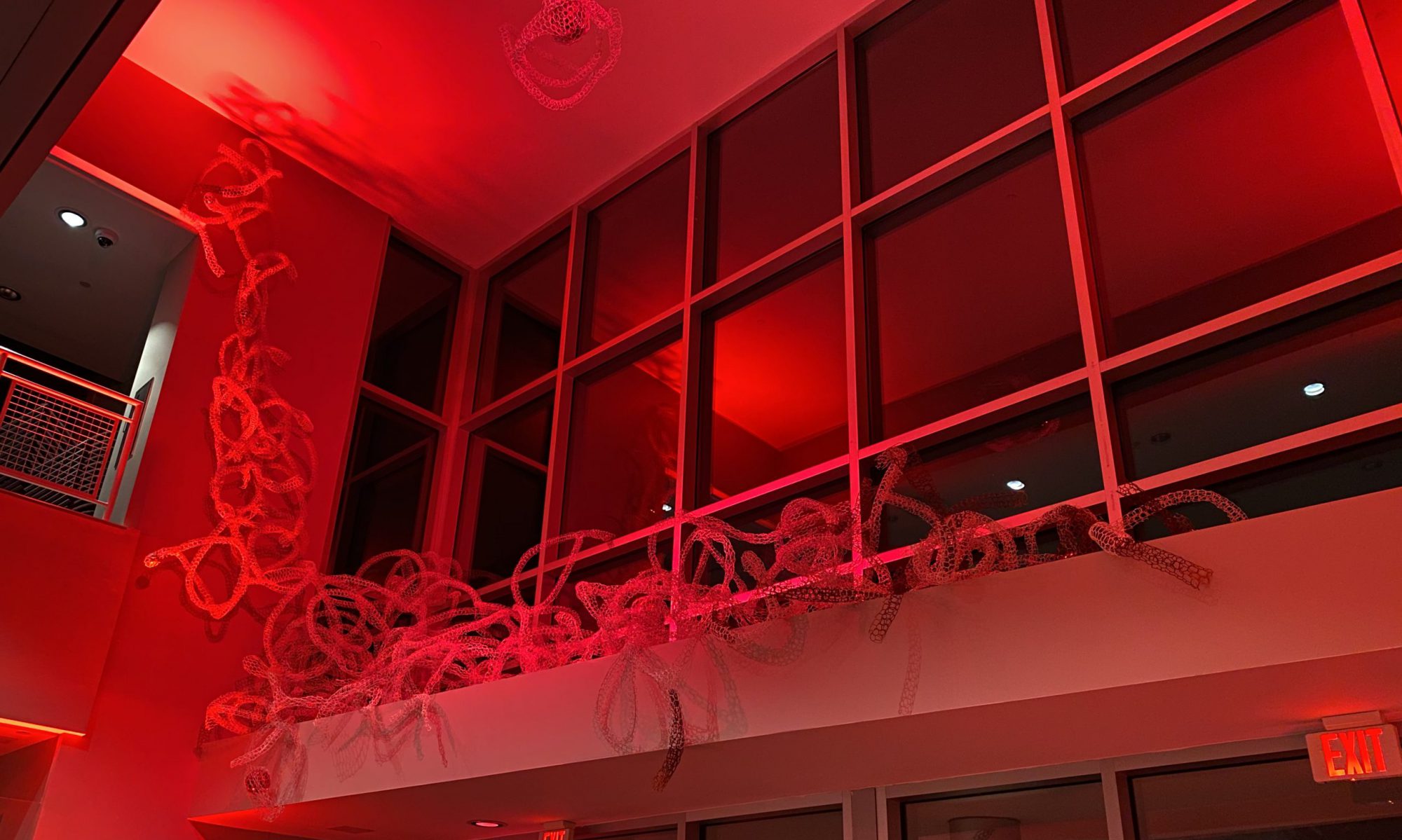
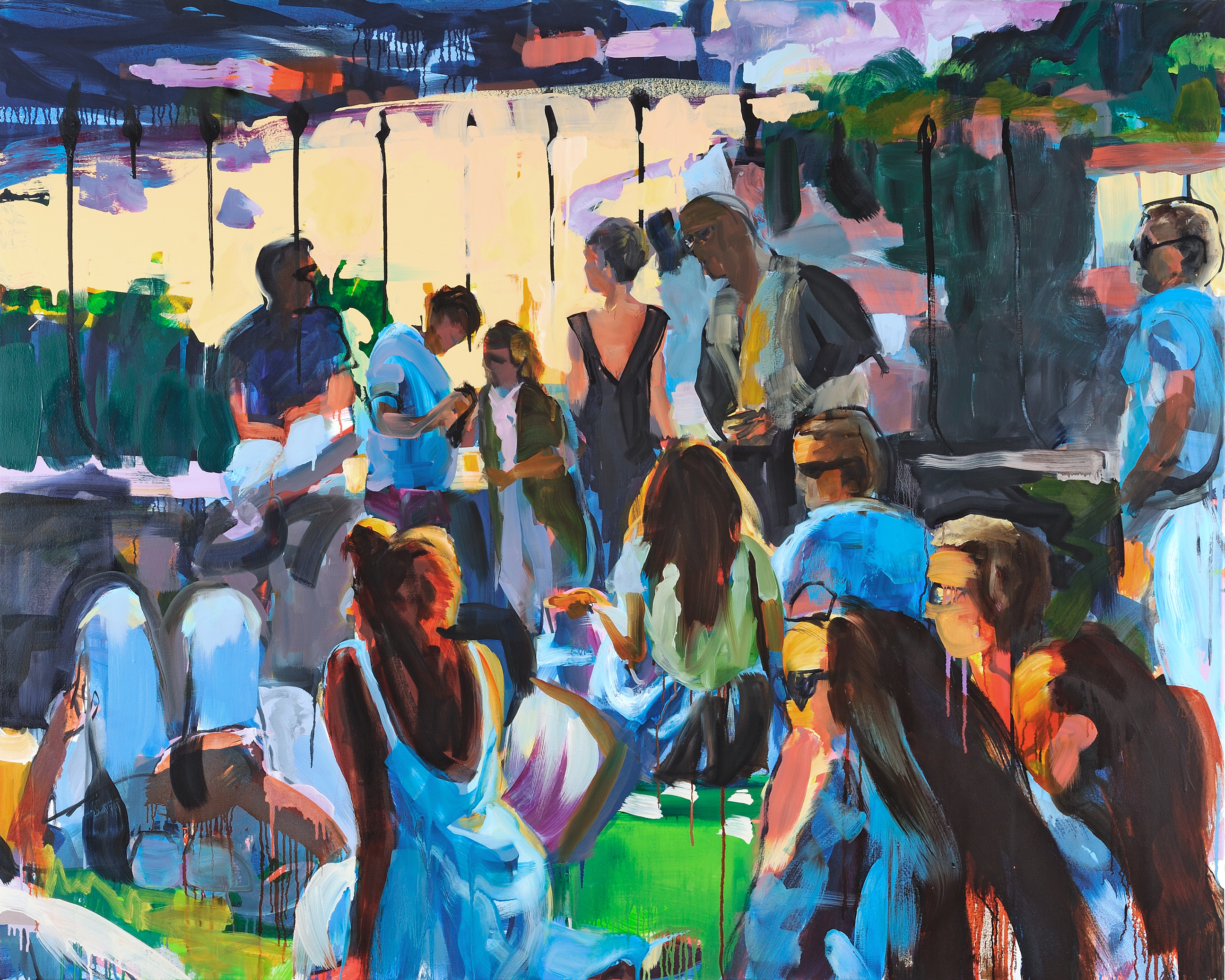

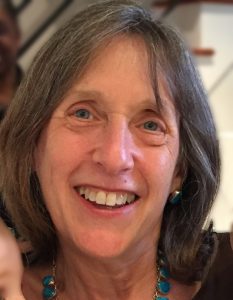 I start by taking photos, lots of photos. I try to carry my camera or iPhone with me and will stop and take a picture if something strikes me as noteworthy, a building in the golden hour, a shadow, people gathered at a public event, a reflection in a window. Often the images won’t make a full composition but have an interesting texture of an element that could be part of a painting. I spend a lot of time thinking about the images I’ve gathered and something will call out to me and then I’ll start composing an image in Photoshop. Frequently this image becomes a small painted color study and if the potential is there for a larger painting, I’ll go ahead and will begin sketching the image in paint on a toned canvas or panel. First I work up a value study and when I’m pleased with the result I add color. I often use squeegees and rollers in addition to my paint brushes to get a desired effect.
I start by taking photos, lots of photos. I try to carry my camera or iPhone with me and will stop and take a picture if something strikes me as noteworthy, a building in the golden hour, a shadow, people gathered at a public event, a reflection in a window. Often the images won’t make a full composition but have an interesting texture of an element that could be part of a painting. I spend a lot of time thinking about the images I’ve gathered and something will call out to me and then I’ll start composing an image in Photoshop. Frequently this image becomes a small painted color study and if the potential is there for a larger painting, I’ll go ahead and will begin sketching the image in paint on a toned canvas or panel. First I work up a value study and when I’m pleased with the result I add color. I often use squeegees and rollers in addition to my paint brushes to get a desired effect.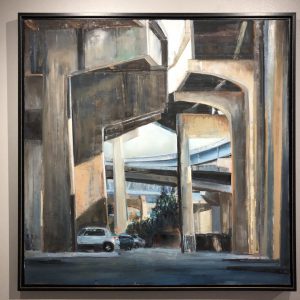
 The woman in “In Her Shadow” is Ms. Vee, Veronica Cooper. She is a force of nature and began her career as one of the first female pullman porters, She has worked as an accountant, seamstress and artist. She owned and operated Culture Coffee on Kennedy Street and opened Culture Coffee Too in Fort Totten a couple of years ago. She is always stylish from her brightly colored glasses to her gold lame pants.
The woman in “In Her Shadow” is Ms. Vee, Veronica Cooper. She is a force of nature and began her career as one of the first female pullman porters, She has worked as an accountant, seamstress and artist. She owned and operated Culture Coffee on Kennedy Street and opened Culture Coffee Too in Fort Totten a couple of years ago. She is always stylish from her brightly colored glasses to her gold lame pants.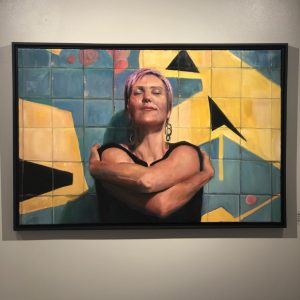
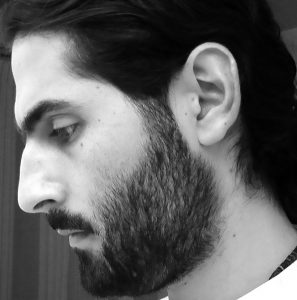 That’s a difficult question to answer for me because I don’t often tie my personal experiences to my work. I immigrated to the U.S. as a teenager and have been straddling two cultures ever since. Yet I don’t feel like I belong fully in either. I suppose this sense of not belonging is pretty common among artists. I’m also a contemplative person by nature and that definitely seeps into my work in big ways. My current worldview is largely informed by science, mathematics and Buddhism. I firmly believe in statistics and coincidence—the business of fate and whatnot makes no sense to me. This has the largest influence on my art by far. A lot of my work has elements of controlled randomness, whether in the decisions surrounding the work, the process of making it or the final result itself.
That’s a difficult question to answer for me because I don’t often tie my personal experiences to my work. I immigrated to the U.S. as a teenager and have been straddling two cultures ever since. Yet I don’t feel like I belong fully in either. I suppose this sense of not belonging is pretty common among artists. I’m also a contemplative person by nature and that definitely seeps into my work in big ways. My current worldview is largely informed by science, mathematics and Buddhism. I firmly believe in statistics and coincidence—the business of fate and whatnot makes no sense to me. This has the largest influence on my art by far. A lot of my work has elements of controlled randomness, whether in the decisions surrounding the work, the process of making it or the final result itself.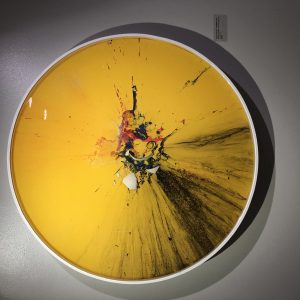 Science has had a huge impact on my thinking, both in art and in life. My work isn’t scientific per se, but definitely inspired by certain principals like systems theory, swarm intelligence, and game theory. I also use technology in some of my work, but there’s nothing particularly unusual about that. When the Hubble images started coming out, I became obsessed. The caption on one simply noted the distance of the exploding star in the image, and it was something in the hundreds of millions of light years away. Aside from being a staggeringly impossible number to fathom, there was something profound and a bit sad and poetic about it: what I was looking at was an event that happened some hundreds of millions of years ago, yet somehow we’re now witnessing it.
Science has had a huge impact on my thinking, both in art and in life. My work isn’t scientific per se, but definitely inspired by certain principals like systems theory, swarm intelligence, and game theory. I also use technology in some of my work, but there’s nothing particularly unusual about that. When the Hubble images started coming out, I became obsessed. The caption on one simply noted the distance of the exploding star in the image, and it was something in the hundreds of millions of light years away. Aside from being a staggeringly impossible number to fathom, there was something profound and a bit sad and poetic about it: what I was looking at was an event that happened some hundreds of millions of years ago, yet somehow we’re now witnessing it.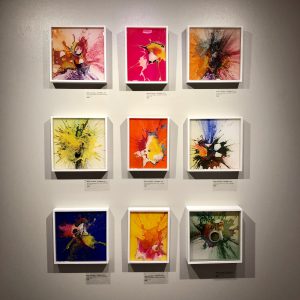 These are pretty involved pieces, and the process has evolved. I start by making the boards and preparing them. Then I make the plaster shells that will hold the pigments. Once all that prep is done, I fill a shell with the various pigments and aggregates. Here I have some measure of control: the order in which I put the material into the shell has some effect on the final result. I’ve built a special enclosure for this step because once I make the drop, the piece has to stay in place until it dries, then I have to spray it with fixative before I can handle it. Because I use powder pigments, I had to come up with a way to spry the fixative indirectly so that it doesn’t blow the powders away. After all that, I add the frame, seal the edges, and pour the resin. The process can take a week or more, yet the actual drop itself happens in a split second. And it’s by far the most exciting part of the process!
These are pretty involved pieces, and the process has evolved. I start by making the boards and preparing them. Then I make the plaster shells that will hold the pigments. Once all that prep is done, I fill a shell with the various pigments and aggregates. Here I have some measure of control: the order in which I put the material into the shell has some effect on the final result. I’ve built a special enclosure for this step because once I make the drop, the piece has to stay in place until it dries, then I have to spray it with fixative before I can handle it. Because I use powder pigments, I had to come up with a way to spry the fixative indirectly so that it doesn’t blow the powders away. After all that, I add the frame, seal the edges, and pour the resin. The process can take a week or more, yet the actual drop itself happens in a split second. And it’s by far the most exciting part of the process! A lot of artists find inspiration in literature and poetry. My work is not representational and therefore never a literal (no pun intended) translation of whatever inspired it. I often find inspiration in reading stories or poems and equally in reading scientific articles. I think there are tremendous and fertile sources for the imagination in scientific discovery. That series is inspired by a story entitled “The Distance to the Moon,” from Italo Calvino’s Cosmicomics. Calvino takes modern scientific knowledge, mostly about the formation of the universe, and retroactively creates fantastical stories and myths that work with them in beautiful ways. It pains me when people describe science as cold. The scientific method may be disinterested in how we feel about it, but the creative spark that sets a scientist’s mind on some hypothesis is the same one that every artist and poet feels. It’s a human spark of curiosity about things larger than ourselves that we do not yet understand but might hope to bring forth with a lot of imagination and hard work.
A lot of artists find inspiration in literature and poetry. My work is not representational and therefore never a literal (no pun intended) translation of whatever inspired it. I often find inspiration in reading stories or poems and equally in reading scientific articles. I think there are tremendous and fertile sources for the imagination in scientific discovery. That series is inspired by a story entitled “The Distance to the Moon,” from Italo Calvino’s Cosmicomics. Calvino takes modern scientific knowledge, mostly about the formation of the universe, and retroactively creates fantastical stories and myths that work with them in beautiful ways. It pains me when people describe science as cold. The scientific method may be disinterested in how we feel about it, but the creative spark that sets a scientist’s mind on some hypothesis is the same one that every artist and poet feels. It’s a human spark of curiosity about things larger than ourselves that we do not yet understand but might hope to bring forth with a lot of imagination and hard work.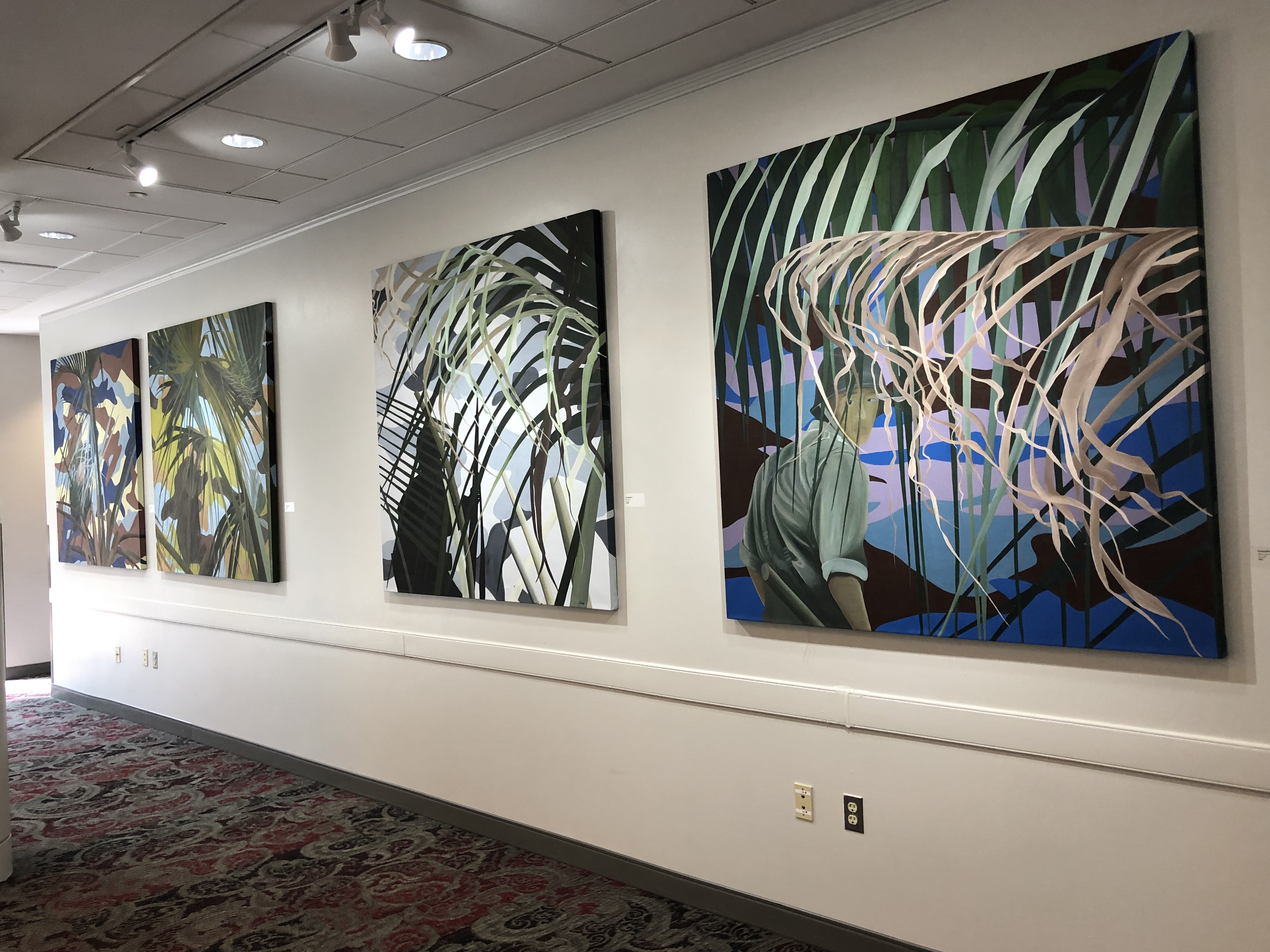

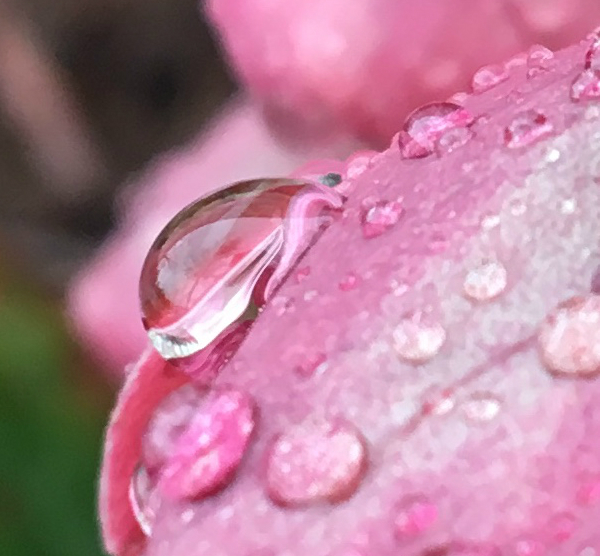


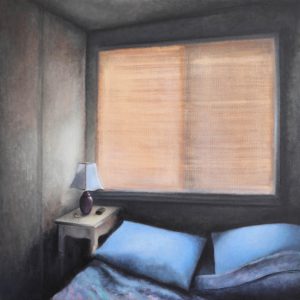
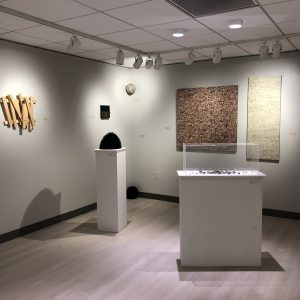 We are very pleased to invite you to an evening of artists talks with Lisa Noble and Travis Childers next Wednesday evening December 12th, 2018 6-8pm. Lisa and Travis have distinct visions where they explore memory and our experience of the day to moment.
We are very pleased to invite you to an evening of artists talks with Lisa Noble and Travis Childers next Wednesday evening December 12th, 2018 6-8pm. Lisa and Travis have distinct visions where they explore memory and our experience of the day to moment.